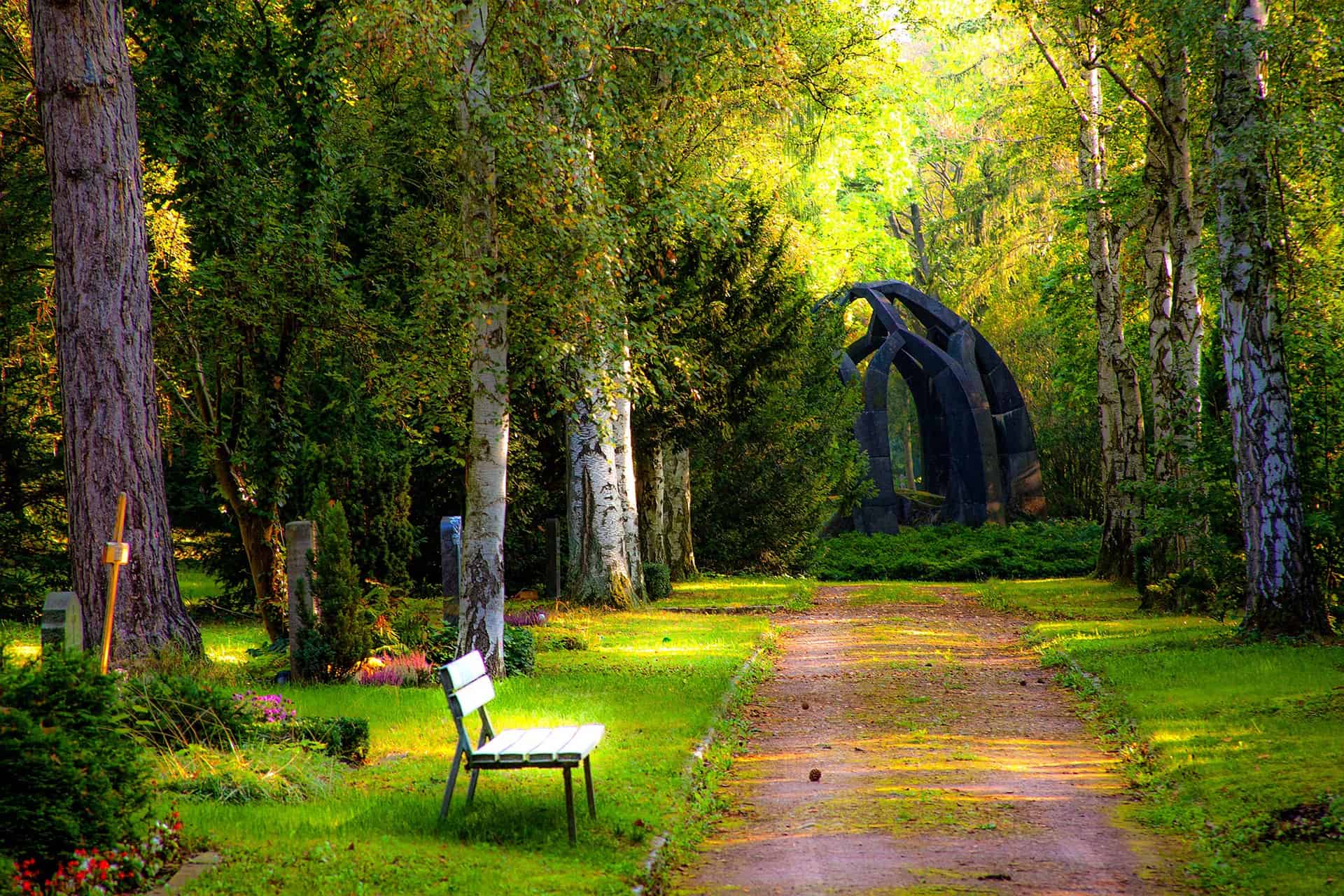
Everyone these days is conscious about living as sustainably as possible, but even after death, there are plenty of opportunities to reduce your ecological footprint. Indeed, in the funeral industry, great strides have been made in recent years in terms of sustainable innovations.
On average, 3254 people die every week in the Netherlands. Cremation or burial are then usually the most chosen ways to go, but both options are harmful to the environment. “Cremation is currently done mainly in gas-fired ovens, so that produces CO2 emissions,” says Ilse van de Voort, manager of corporate social responsibility at funeral cooperative DELA. “And to bury someone you first have to stir the ground. In doing so, you disturb the local ecology. Then the coffin with the deceased is placed in a grave and you cover it, but most people do not die healthy. Many people who die have a medical background, so harmful substances used in treatment can end up in the soil.”
This is partly why a new option has been introduced: resomation, also known as water cremation. This process uses less energy and releases significantly fewer pollutants. Water cremation is a chemical process devised by Scottish Sandy Sullivan of Resomation Ltd. It involves dissolving the body of a deceased person in a steel pressure vessel. In the tank, a combination of water and a substance with a high PH value causes the body to decompose. Potassium hydroxide is usually used for this purpose. No direct greenhouse gases and particulate matter are released during this process.
Second-hand artificial hip
For now, resomation is prohibited in the Netherlands. This is because there is a law that stipulates what is and is not allowed during a funeral: the Law on the Burial of the Dead. Currently, you have three choices, namely: burial, cremation, or disposal to science. Although a revision of the law is coming, it will not take place before the first period of 2024. It looks like resomation will then also become legal in the Netherlands.
According to Van de Voort, there are no direct disadvantages to resomation and it is mainly a matter of emotion. “For some people, the idea of cremation and fire is very scary, but resomination and water are not. Others, on the contrary, have their reservations about resomation because the body is dissolved.”
An additional advantage of resomation is that implants can easily go into the vessel with it. “A pacemaker cannot go into a gas oven because it is an electrical device. With resomation, you can. An additional advantage is that an artificial hip does not wear out during the process and comes out almost surgically perfect. If you loosen a few screws, you simply have a new artificial hip again. In principle, this is not much different from a donor organ.”
Ethical
After water cremation, two things remain an aqueous, sterile liquid and the bones of the deceased. The liquid can be purified to eventually return to the water cycle before disappearing into groundwater or a river. “You have to ask yourself whether ethically you want that,” says Van de Voort. “When you cremate someone, at the end of the cremation there are ashes left. As an industry, we try very hard to ensure that the ashes go completely to the next of kin. We go very far with that. It feels a bit contradictory if you then throw away some of the residual product with resomation.” The bones are preserved, though. These are dried and ground into powder. The bereaved can then take this powder home with them. Just like the ashes after cremation.
One with nature
For those for whom this new form does not appeal, there are also plenty of other more sustainable alternatives to reduce the environmental burden at a cremation or burial, as the funeral industry has not been idle in these areas either. For instance, several sustainable coffins have already been launched on the market. Most standard coffins use materials that are harmful to the environment and wood from trees that take a long time to grow. They also use many plastics, metals, and glues that are difficult to break down and sometimes even toxic to nature. Several companies are therefore pushing to offer sustainable coffins as an alternative.
One of the companies capitalizing on the ever-growing demand for sustainable coffins is Onora. They have also developed a 100 percent biodegradable coffin. This coffin is made of bioplastic. This is a type of plastic made from natural products such as starch, potatoes, or corn. This halves the environmental impact compared to standard coffins. This coffin is also suitable for sustainable cremation. Burning releases up to 75 percent fewer harmful gases.
Degradable living coffin
Another company that has developed a sustainable coffin is Delft-based LOOP with their so-called Living Cocoon: a 100 percent biodegradable, living coffin. This coffin has been on the market for two years and is made of mycelium, the root network of mushrooms. The coffin breaks down completely within 45 days, after which the mycelium gets to work. Thanks to these fungal threads, the body breaks down within two to three years, releasing all nutrients from the body into nature. Toxic substances, released during decomposition or already in the soil, are neutralized by the mycelium. Thus, the box increases the fertility of the soil. At the end of August this year, DELA, the largest funeral director in the Netherlands, announced that they were adding the mushroom coffin to their range.

Taking its course
Fewer and fewer people are choosing a traditional cemetery. Instead, they are opting for a place in nature. In a natural cemetery, the body of a deceased person is buried in the relevant natural area. The coffin, clothing, and other items are made of sustainable, organic materials so that everything is eventually completely incorporated into the natural cycle. In the Netherlands, there are currently 33 natural burial grounds, some of which are still under development.
During a natural burial, sustainable shrouds are used. These are made of hemp. Little water is consumed in growing this plant. Besides, there are no pesticides involved. This makes it a sustainable option. There are also shrouds made of wool, which also contains no harmful substances.
The most sustainable crematorium
When it comes to cremation, the funeral industry does not sit still either. Most cremations use a gas oven. Since 2019, an important sustainable step has been taken in this regard. That’s when the first electric cremation oven was installed in the Netherlands. ”There’s no more gas involved in that at all,” says Van de Voort. “Because the process is so different, it uses up to 80 percent less energy than a gas-fired oven and, in addition, you don’t emit any CO2.”
The Netherlands’ most sustainable crematorium is in Hoentocht, Groningen. The first electric cremation oven was also installed here in 2019. Boy Faber is responsible for making DELA’s real estate more sustainable and was closely involved in the construction project. “We had the ambition to build the most sustainable crematorium in the Netherlands. This was a kind of test. We focused on sustainable materials. We used solid wood construction panels. We built a complete wooden skeleton and in addition, we used solid wood construction panels.”
The crematorium is also modularly built: “All the walls and facades consist of panels that can be detached to be used elsewhere.” DELA hopes to halve its CO2 emissions by 2030.








